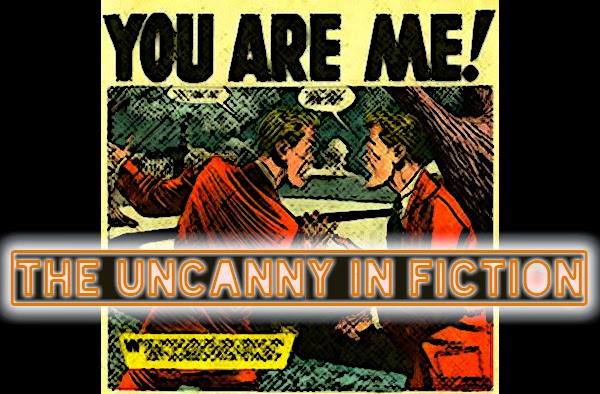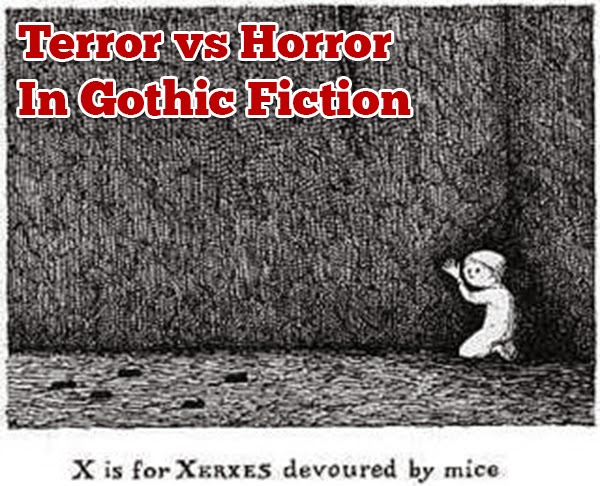The uncanny “undoubtedly belongs to all that is terrible—to all that arouses dread and creeping horror ...”
—Sigmund Freud
Have you ever had the feeling, upon waking, that your dream had followed you? Perhaps you woke, but a small panicked voice deep within you screamed you hadn’t, that it was still a dream, that ‘they’ were still out there, still coming to get you. That deep confused uneasiness, that sense of unreality, is one of the aspects of the uncanny; a feeling, a presentiment, that straddles the line between reality and unreality. [1]
In what follows I want to examine the various aspects of the uncanny as well as how the feeling might be elicited in readers.
The Uncanny: A Definition
Our word, “uncanny” comes from the German word, “unheimlich,” which means, more or less, “the opposite of what is familiar.” Or, rather, “a mixture of the familiar and unfamiliar that is experienced as being peculiar.” (The Uncanny, Wikipedia)
I prefer Sigmund Freud’s definition. In “The Uncanny” he wrote, “[...] the ‘uncanny’ is that class of the terrifying which leads back to something long known to us, once very familiar.” [2] To put it another way, it is the familiar which is, for whatever reason, kept out of sight. Hidden.
The Circumstances Of The Uncanny
Freud asks: Why is the uncanny frightening? Is it because it is the opposite of what is known and familiar? He didn’t think so and pointed out that just because something is new or unfamiliar does not automatically mean it is frightening. Something in addition to this is at play.
The Uncanny And The Familiar
The uncanny depends upon something, in Freud’s words, “strangely familiar,” something “which defeats our efforts to separate ourselves from it.”
The Familiar Evil
Another way of looking at the uncanny, another aspect of the feeling, is of something that ought to have remained hidden and secret but has, for whatever reason, become visible.
In this sense, the uncanny is the familiar evil. Freud writes: “on the one hand, it means that which is familiar and congenial, and on the other, that which is concealed and kept out of sight.” It is that which “ought to have remained hidden and secret, and yet comes to light.” [1]
Tsvetan Todorov: The Circumstances of the Uncanny
Todorov writes,
“The fantastic requires the fulfillment of three conditions. First, the text must oblige the reader to consider the world of the characters as a world of living persons and to hesitate between a natural and a supernatural explanation of the events described. Second, this hesitation may also be experienced by a character; thus the reader's role is so to speak entrusted to a character, and at the same time the hesitation is represented, it becomes one of the themes of the work--in the case of naive reading, the actual reader identifies himself with the character. Third, the reader must adopt a certain attitude with regard to the text: he will reject allegorical as well as "poetic" interpretations....” [3]
Let’s go through these conditions.
1. “the text must oblige the reader to consider the world of the characters as a world of living persons and to hesitate between a natural and a supernatural explanation of the events described.”
So ...
- The story world needs to be immersive.
- The story and story world must allow for two separate and opposite explanations, explanations which are equally plausible.
2. “this hesitation may also be experienced by a character; thus the reader's role is so to speak entrusted to a character, and at the same time the hesitation is represented, it becomes one of the themes of the work--in the case of naive reading, the actual reader identifies himself with the character.”
- The story needs to be told from the perspective of one of the characters in the story. This would seem to indicate either a close third person or first person point of view.
- The viewpoint character must not know whether what they experience is a dream or reality, whether they are mad or sane. In general, they must not know whether their experiences have a natural, or supernatural, explanation.
3. “the reader must adopt a certain attitude with regard to the text: he will reject allegorical as well as "poetic" interpretations....”
- I’m not one hundred percent sure what Todorov means here, but I think this is another reference to the fact that the reader must be led to suspend disbelief. The story itself must have a sense of reality, of consistency. It must have its own logic, even though that logic might be extremely strange and twisted.
⁃ When I read (3) I was reminded of the third movie in John Carpenter’s Apocalypse Trilogy, “In the Mouth of Madness.” In this movie, an homage to H.P. Lovecraft, humans are driven insane when they either finish reading a book called, you guessed it, “In the Mouth of Madness” or watch the movie of the same name. The idea is to convince the audience that by watching the movie or reading the book that they, too, will go insane. Through the use of a twisted kind of self-reference, the story reaches out to the reader and attempts to draw him or her into the horrific dreamworld of the story.
This isn’t a new idea, Robert W. Chambers employed it when he wrote, “The King in Yellow,” first published in 1895 (it can be downloaded from Project Gutenberg here). This book is a collection of short stories, many of which include mention of a book called “The King in Yellow.” Reading this book (the book within the book) was guaranteed to drive a person mad. Of course, the implication—the way the story reached out beyond itself and involved the reader—is that the reader, due to her having read the volume, will be condemned to madness just as the characters were.
Really, this is an amazing and special kind of story—one which warns the reader not to finish the story!
Examples Of The Uncanny
Alive?
Doubt about whether a certain animate being is truly alive. (see: Uncanny Valley) Also, doubt about whether a certain inanimate being is truly not living.
Examples: Wax work figures, automatons, puppets, clowns.
The following passage has been often quoted in the literature. Freud writes:
“Jentsch says: ‘In telling a story, one of the most successful devices for easily creating uncanny effects is to leave the reader in uncertainty whether a particular figure in the story is a human being or an automaton; and to do it in such a way that his attention is not directly focused upon his uncertainty, so that he may not be urged to go into the matter and clear it up immediately, since that, as we have said, would quickly dissipate the peculiar emotional effect of the thing. [...]’”
Is this a dream?
Doubt about whether one is dreaming or perhaps delirious, even insane, a doubt often brought on by a recurrence of “the same situations, things and events.”
Freud wrote:
“That factor which consists in a recurrence of the same situations, things and events, will perhaps not appeal to everyone as a source of uncanny feeling. From what I have observed, this phenomenon does undoubtedly [...] awaken an uncanny feeling, which recalls that sense of helplessness sometimes experienced in dreams. Once, as I was walking through the deserted streets of a provincial town in Italy which was strange to me, on a hot summer afternoon, I found myself in a quarter the character of which could not long remain in doubt. Nothing but painted women were to be seen at the windows of the small houses, and I hastened to leave the narrow street at the next turning. But after having wandered about for a while without being directed, I suddenly found myself back in the same street, where my presence was now beginning to excite attention. I hurried away once more, but only to arrive yet a third time by devious paths in the same place. Now, however, a feeling overcame me which I can only describe as uncanny, and I was glad enough to abandon my exploratory walk and get straight back to the piazza I had left a short while before.” [2]
The double
Freud wrote:
“These themes are all concerned with the idea of a “double” in every shape and degree, with persons, therefore, who are to be considered identical by reason of looking alike; Hoffmann accentuates this relation by transferring mental processes from the one person to the other—what we should call telepathy—so that the one possesses knowledge, feeling and experience in common with the other, identifies himself with another person, so that his self becomes confounded, or the foreign self is substituted for his own—in other words, by doubling, dividing and interchanging the self. And finally there is the constant recurrence of similar situations, a same face, or character-trait, or twist of fortune, or a same crime, or even a same name recurring throughout several consecutive generations.” [2]
When I read this I thought of the book, The Stepford Wives by Ira Levin. Also the movie Pi, or The Number 23.
Other instances of ‘the double’ are reflections in mirrors, shadows, guardian spirits and, arguably, the belief in the soul. [2]
That is a rather broad list, but it makes sense to me. Think of the many stories about staring into a mirror and repeating a name three times to summon an entity or of the myth that mirrors can be used as gateways. For example, Lewis Carroll’s “Through the Looking Glass”).
Notes:
3. Tsvetan Todorov, The Fantastic (Ithaca: Cornell UP, 1975), via web page: The Uncanny and the Fantastic.



